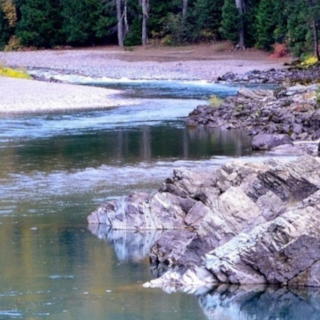Cimate Change Vulnerability Assessment
Introduction
The Intergovernmental Panel on Climate Change (IPCC) defines vulnerability as "the degree to which a system is susceptible to, or unable to cope with, adverse effects of climate change". Thus, vulnerability is a function of exposure (the magnitude or risk of physical changes in climate conditions), sensitivity (the likelihood of adverse effects to an organism or system given climate changes), and adaptive capacity (the intrinsic ability for an organism or system to reduce its sensitivity by successful response to changing climate [e.g., plastic or evolutionary responses, range shifts] (IPCC 2007).
Ultimately, the goal of a vulnerability assessment, per the IPCC, is to identify the degree of future risks from climatic change and to identify vulnerable areas to provide a solid foundation for climatic change mitigation planning.
What is Climate Change Vulnerability Analysis?
Understanding how species and habitats are likely to respond to climate change is critical in developing effective conservation and management strategies for freshwater ecosystems.
Salmonids, which are culturally and economically critical keystone species and indicators of ecosystem health since they are sensitive to altered stream flows and temperatures related to ongoing climate change. Unfortunately, owing to a century of habitat change or loss, hatchery operations, and misguided harvest management, salmonid populations are declining.
Future climate changes, such as warming stream temperatures and changing hydrological systems may compound existing stresses to salmonids.
Relatively conservative projections of climate change over the next 100 years indicate the potential for climate warming of 3-5°C and annual precipitation changes up to 20% within Pacific salmon habitat.
This Decision Support System (DSS) is designed to respond to and inform the myriad of questions surrounding risks to salmonids under a changing climate.
The integrated DSS provides several modules to provide data, information, and tools to support research and inquiries concerning potential climate change effects on salmonids.
RAP Approach to CCVA
The climate vulnerability of salmonids revolves around climate exposure compounding existing stressors to salmonids. These include not only physical habitat conditions, but also the genetic and demographic properties of a given species or population. The tools provided here are designed to integrate climate, habitat, genetic, and demographic data into a robust, spatially-explicit CCVA
Sources
Glick, P., B. A. Stein, and N. A. Edelson. 2011. Scanning the conservation horizon: A guide to climate change vulnerability assessment. National Wildlife Federation, Washington, D.C. Available from http://treesearch.fs.fed.us/pubs/37406 (accessed November 14, 2012).
IPCC (International Panel on Climate Change). 2007. Climate Change 2007: Synthesis Report. Contribution of Working Groups 1, II, and II to the Fourth Assessment Report of the Intergovernmental Panel on Climate Change. Intergovernmental Panel on Climate Change 1. IPCC, Geneva, Switzerland.
